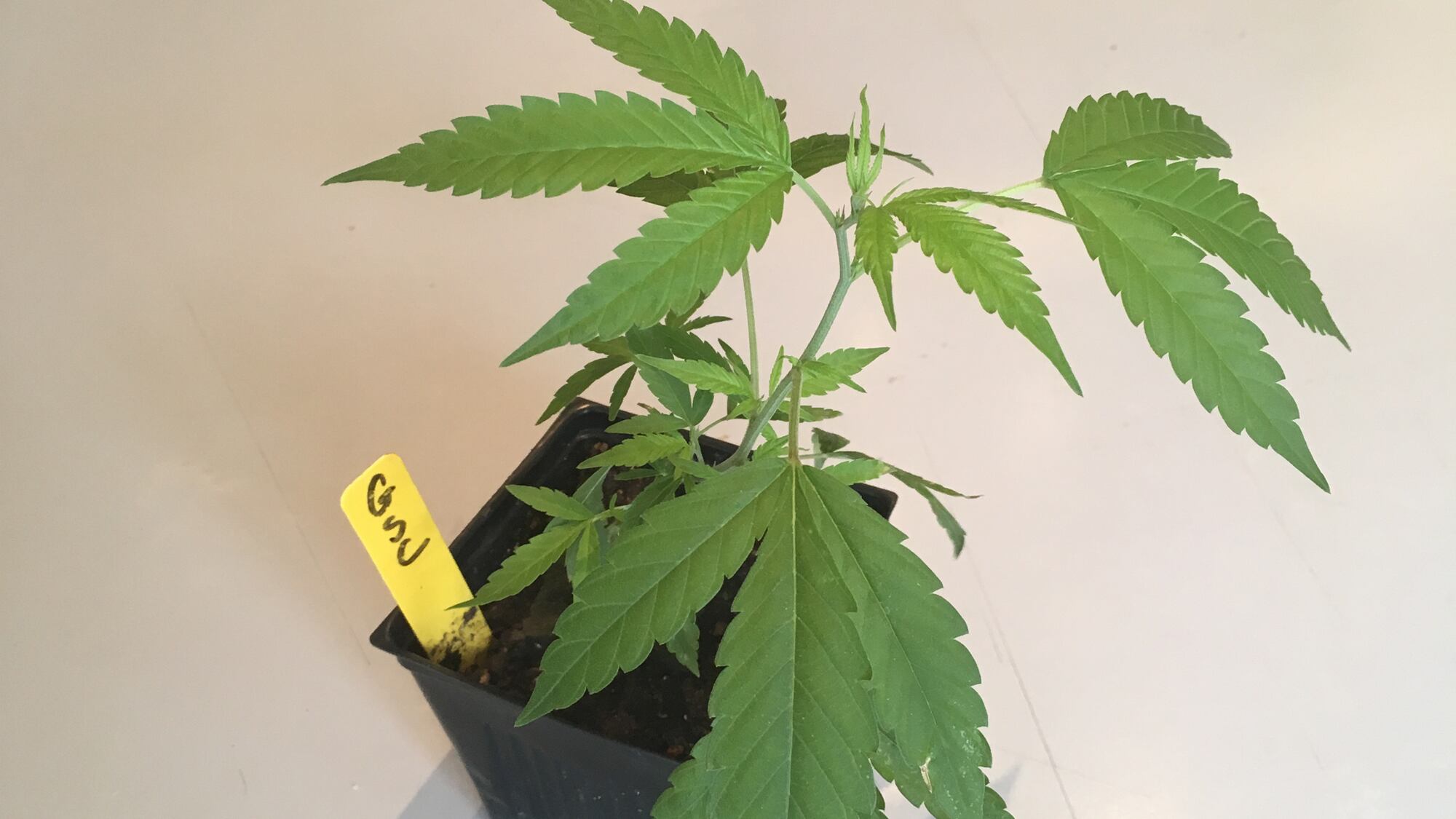The first time we brought live cannabis plants into the WW office, there was awkward tittering. Weed wasn't quite fully legal for another month or so, and many on our staff had never seen wee little clones up close.
My, how fast things change. We're just starting our third consecutive year of growing, and no one batted an eye at the 16 sacks of soil and gallons of weird fertilizer in the conference room. Truth be told, it's a lot more discreet than the day we packaged judging kits for the Cultivation Classic and our entire 13,000-square-foot office smelled like a stash box.
This year, our goal is to grow something worthy of entry in that competition.
Year one, we just wanted the plants to survive and flower. We did that, but lost our entire crop to bud rot. Year two, we wanted to actually harvest a smokable product from our plants on the roof. We did, though the plants weren't especially large and the flower itself wasn't quite the fire bud we'd hoped. It's year three, and playtime is over. We want big, bushy plants covered in tasty, resinous flowers.
Here's what we plan to do differently this year based on our two years of experience. Use these same tips if you're playing at home.
Be choosy about what we grow.
The first year, we just grew the first clones we were offered for free. They were an obscure SoCal strain called P91 and they were…fine. The strain was super-skunky with a strong cat-piss flavor and extreme sedative effect. We should have known this from the description, which called it "smokable morphine," but we were too excited to care. We learned our lesson: You're going to spend a lot of time caring for these plants, so make sure they're something you'll love.

Last year, we grew four different strains, including Texada Timewarp, which a grower friend sprouted from seeds I smuggled back from British Columbia, where it's a popular outdoor strain. Sadly, the Texada Timewarp hates life indoors—only the clones from one of the four seeds survived the winter in veg, and it's not looking great. We're hoping a little fresh air can revitalize it, as these girls grow into monsters outdoors in colder, wetter climate than here.
Related: What We Learned In Our Second Year of Growing Weed in the Office
Start earlier.
By "earlier," I mean weeks ago. The old rule of thumb, according to our former in-house consultant (read: Deadhead accounting guy), was the clones should be in the ground by 4/20. "I know it sounds weird," he once told me. "But that's actually just the right time."
But if you're growing tomatoes (actual tomatoes, not grow-shop tomatoes), you know that chilly nights in this climate are very dangerous for young, spindly plants. Even though we have a large plant tent, for now we're keeping our girls inside at night. In another week or so, they'll go into the tent and into bigger pots.
Get bigger fabric pots.
Speaking of pots—they're key to getting bigger plants. For us, growing in regular ground-type dirt, such as a "garden," isn't an option. Even if you can do that, you might consider Smart Pots, the fabric pots we use, because in the cool, wet October days when the plants are finishing, you'll be able to drag them under cover on damp nights. That's also when thieves tend to come—nobody wants to rip off a plant that still needs food and water.
Last year, we got 20-gallon Smart Pots. That's pretty big, and our plants were pretty big, but they were far from the monsters we've seen our friends grow. So this year we got 45-gallon pots and 16 bags of Roots Organics soil blend to fill them, at a cost of about $350.
Top the plants.
This is one of those super-old tricks our former consultant used, but we hadn't tried until now. As the top flower on the cannabis plant grows up and up, it emits a hormone that tells the flowers below it not to compete and instead to stay in their place. The genetics are a factor, but when the plant gets to be about 3 feet tall, you cut off that top flower. The flowers underneath will grow taller and the plant will be bushier.
We've never done this before, but we'll try it this year, hopefully getting plants that are thick with resinous flowers and still short enough to cram into our tent on rainy October nights.
Use plant food.
We've tried to stay as free of muss and/or fuss as we could while growing. Aside from a brief period during the first grow when an intern showed some extra initiative, we've given our plants only sunlight and water. That changes this year, because we've got organic plant food.
"How organic do you want to go?" asked the helpful clerk.
I didn't care—I'd use a blend of MSG powder and ground-up McDonald's french fries if it would grow a big, tasty plant. Then I remembered I was at Roots, an organic-focused shop, and opted for the local product, Vital Earth's bat guano.
Use more water.
It sounds obvious, but we're pretty sure we left our plants thirsty in each of the first two years, stunting their growth as a result. Remember, as the folks at Roots told us, a large plant in a 45-gallon pot can use 2½ gallons of water on a hot August day. Last year, we invested in a hose long enough to reach the roof, making it easy to give the plants plenty of water. And so we shall.
